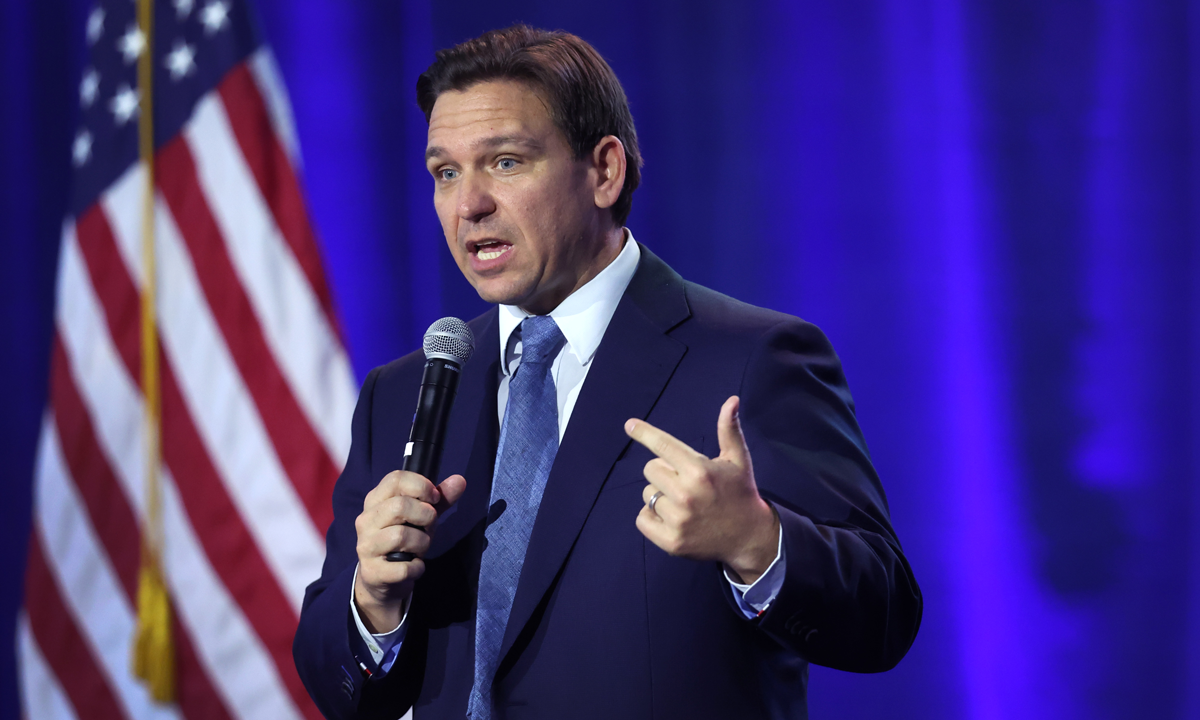Florida Just Became the Nation’s Biggest School Choice Laboratory
With the passage of HB 1, every student in the nation’s third-largest state is eligible to receive a voucher or education savings account

Get stories like this delivered straight to your inbox. Sign up for The 74 Newsletter
Florida became the nation’s biggest K–12 marketplace on Monday, when Gov. Ron DeSantis signed legislation that offers school vouchers and education savings accounts to every family in the state.
The new law, HB 1, effectively universalizes a multi-pronged system of private school choice that has grown over the past few decades to include vouchers, ESAs and tax credit scholarships. Over 80,000 students currently participate in just one such program, the Family Empowerment Scholarship, receiving an average annual voucher of roughly $7,600 to defray the cost of private school tuition.
HB 1 will extend eligibility to the rest of the students statewide, including 2.9 million currently attending public schools. It makes Florida the latest — and, by far, the largest — jurisdiction to offer universal school choice, following similar moves in West Virginia, Arizona, Utah, Iowa and Arkansas. By including a provision on part-time public school enrollment, the shift in policy could massively shift the way education services are delivered in the nation’s third-most-populous state.
At a press conference, DeSantis said the reforms represent “the largest expansion of education choice not only in the history of this state, but in the history of these United States” — a claim echoed by conservative activist Corey DeAngelis, who wrote in a Fox News op-ed that Florida had “reclaimed the school choice crown” by massively increasing the number of American children who enjoy access to universal school choice.
The policy will take effect on July 1. At the household level, families will apply for a voucher (projected to be worth about $8,700, based on average per-student allotment from districts) through one of Florida’s two scholarship funding organizations. Participating schools must demonstrate fiscal solvency with state authorities, but can maintain discretion in selecting individual students and setting enrollment figures; in other words, any family can receive vouchers but won’t be guaranteed to place students in the school of their choice.
But how will the policy affect K–12 education statewide, as parents race to fill out applications and school districts brace for the financial impact? According to Emory University economics professor Krzysztof Karbownik, “it’s really hard to predict” how HB 1 will affect Florida education.
“We just don’t know, from a U.S. perspective, because nobody has tried this,” he said.
Along with several other economists, Karbownik co-authored a 2020 study of the Florida Tax Credit Scholarship, which awarded scholarships to over 108,000 students in the 2017–18 school year at a cost of $640 million. The paper focused exclusively on the effects of the initiative on nearby public schools, ultimately identifying a strongly positive impact from competition with private schools. Standardized test scores went up while suspensions and absenteeism rates declined, and the benefits were more pronounced for lower-income students.
The findings suggested that further scaling-up of Florida’s voucher regime could yield still-greater results.

But there are limits to what that study, and much of the existing literature on private school choice, can tell us about the overhauls currently occurring across red states like Florida. The only such expansions that are of comparable size have played out across whole countries such as Sweden and Chile, Karbownik said — and the differences in demographics, development, and poverty between those places and any American state make comparisons inherently difficult.
Asked to consider the best-case scenario for Florida’s newly transformed K–12 ecosystem, Karbownik said that he could foresee the possibility that schools and families “leverage the power of competition” to provide better options for kids.
Under this scenario, he said, “those students that chose to utilize the voucher would be the students for whom private schools would indeed be a better option than a traditional public school. And on top of that, those who choose to remain in traditional public schools would benefit from improvement in management and peer quality and smaller class sizes through the competitive effects.”
But several analyses of voucher systems have provided good reason for skepticism. Karbownik also co-authored a previous study of Ohio’s EdChoice Scholarship Program, which extends targeted vouchers to children attending the lowest-performing schools in the state. That report, issued in 2016 by the choice-friendly Thomas B. Fordham Institute, found that — even as private school competition “modestly improved” the achievement of public school students who didn’t use vouchers — voucher recipients themselves fared significantly worse than comparable public school students; those effects lasted for years, suggesting that the academic reversals weren’t simply related to the complications of switching schools.
Already, voucher foes have pointed to ambiguities in the final costs of implementing universal school choice. One of HB 1’s sponsors quoted a figure of just over $200 million during legislative negotiations, but an evaluation by the independent Florida Policy Institute put the total at over $1 billion. Until families begin to apply for vouchers — including some who currently pay full freight for access to their children’s private schools, but would gladly accept a subsidy — the bottom line is undetermined.
Another potential problem is that of surging demand for private school attendance. About 2,000 private K–12 schools currently participate in Florida’s voucher system, and it’s unknown how many have spare capacity to absorb newly eligible families beginning next school year. Some new entrants could materialize in the coming years to pursue state voucher money, Karbownik suggested, potentially creating “a whole market for relatively low-quality private schools” that operate substantially outside the regulations applying to traditional public schools.
To forestall that possibility, he said, the state should adopt measures that would clearly rate the quality of private schools so that families know exactly what they’re buying with the money they receive under HB 1.
“I’m not saying we need to over-regulate everything and make the curricula exactly the same,” Karbownik concluded. “But we should at least make sure that the objective over which they compete — which, from the perspective of legislators, is to deliver the best education to the children of Florida — is the same for private schools as compared to public schools.”
Get stories like these delivered straight to your inbox. Sign up for The 74 Newsletter

;)
